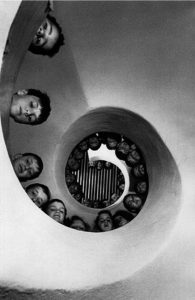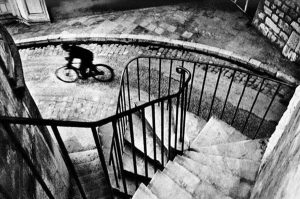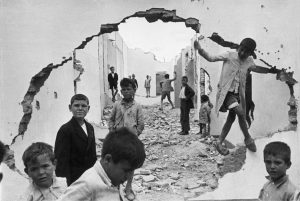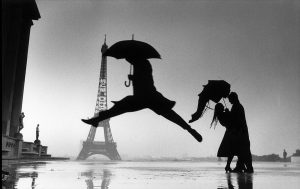 Henri Cartier-Bresson es el ojo del siglo XX. Este célebre fotógrafo francés nos mostró una capacidad inusual para la observación. A través de su objetivo, podemos comprender los momentos más decisivos de nuestra historia contemporánea, los que para bien y para mal nos hicieron tal como somos.
Henri Cartier-Bresson es el ojo del siglo XX. Este célebre fotógrafo francés nos mostró una capacidad inusual para la observación. A través de su objetivo, podemos comprender los momentos más decisivos de nuestra historia contemporánea, los que para bien y para mal nos hicieron tal como somos.
Con su legendaria cámara leica, Cartier-Bresson retrató las convulsas revoluciones de las primeras décadas del siglo XX en China, India, México… hasta la Segunda Guerra Mundial. A lo largo de su extensa carrera tuvo la oportunidad de retratar a personajes como Pablo Picasso, Henri Matisse, Marie Curie, Édith Piaf, Fidel Castro y Ernesto Che Guevara. Cubrió importantes eventos, como el asesinato de Gandhi, la Guerra Civil Española, la independencia de las antiguas colonias africanas o la entrada triunfal de Mao Zedong en Pekín. Cartier Bresson fue también el primer periodista occidental que pudo visitar la Unión Soviética tras la muerte de Stalin. Junto a otras leyendas del negativo, en 1947 fundó la primera agencia de fotografía, el selecto club Magnum.
Fotografiar es poner la mente, el ojo y el corazón sobre un mismo eje.
 Durante toda su vida, persiguió constantemente “el instante decisivo”, tal como él llamaba a esas instantáneas que atrapaba a hurtadillas, en el mismo momento en el que se desarrollaba el clímax de la acción. Es decir, capturaba la vida en el mismo acto de vivir. Hacer clic una milésima antes o después nunca era igual. La fotografía era para Cartier-Bresson un impulso espontáneo procedente de un ojo siempre atento, que capta el instante y su eternidad.
Durante toda su vida, persiguió constantemente “el instante decisivo”, tal como él llamaba a esas instantáneas que atrapaba a hurtadillas, en el mismo momento en el que se desarrollaba el clímax de la acción. Es decir, capturaba la vida en el mismo acto de vivir. Hacer clic una milésima antes o después nunca era igual. La fotografía era para Cartier-Bresson un impulso espontáneo procedente de un ojo siempre atento, que capta el instante y su eternidad.
http://www.henricartierbresson.org/
 Henri Cartier-Bresson is the eye of the twentieth century. This famous French photographer showed an unusual capacity for observation. Through his lens, we can understand the most defining moments of contemporary history, which for better or worse made us as we are.
Henri Cartier-Bresson is the eye of the twentieth century. This famous French photographer showed an unusual capacity for observation. Through his lens, we can understand the most defining moments of contemporary history, which for better or worse made us as we are.
With its legendary Leica, Cartier-Bresson portrayed the convulsive revolutions of the early twentieth century in China, India, Mexico … until the Second World War. Throughout his long career he had the opportunity to portray characters such as Pablo Picasso, Henri Matisse, Marie Curie, Édith Piaf, Fidel Castro and Ernesto Che Guevara. Covered major events such as the assassination of Gandhi, the Spanish Civil War, the independence of the former African colonies or the triumphal entry of Mao Zedong in Beijing. Cartier Bresson was also the first Western journalist was able to visit the Soviet Union after Stalin’s death. Along with other legends of the negative, in 1947 founded the first photo agency, Magnum the select club.
To take a photograph is to align the head, the eye and the heart. It’s a way of life.
 Throughout his life, constantly pursued «the decisive moment» as he called those snapshots that caught sneaking in the moment unfolding in the climax of the action. That is, life caught in the act of living. Click a split before or after was never the same. Photography was Cartier-Bresson for a spontaneous impulse coming from an ever attentive eye which captures the moment and its eternity.
Throughout his life, constantly pursued «the decisive moment» as he called those snapshots that caught sneaking in the moment unfolding in the climax of the action. That is, life caught in the act of living. Click a split before or after was never the same. Photography was Cartier-Bresson for a spontaneous impulse coming from an ever attentive eye which captures the moment and its eternity.

